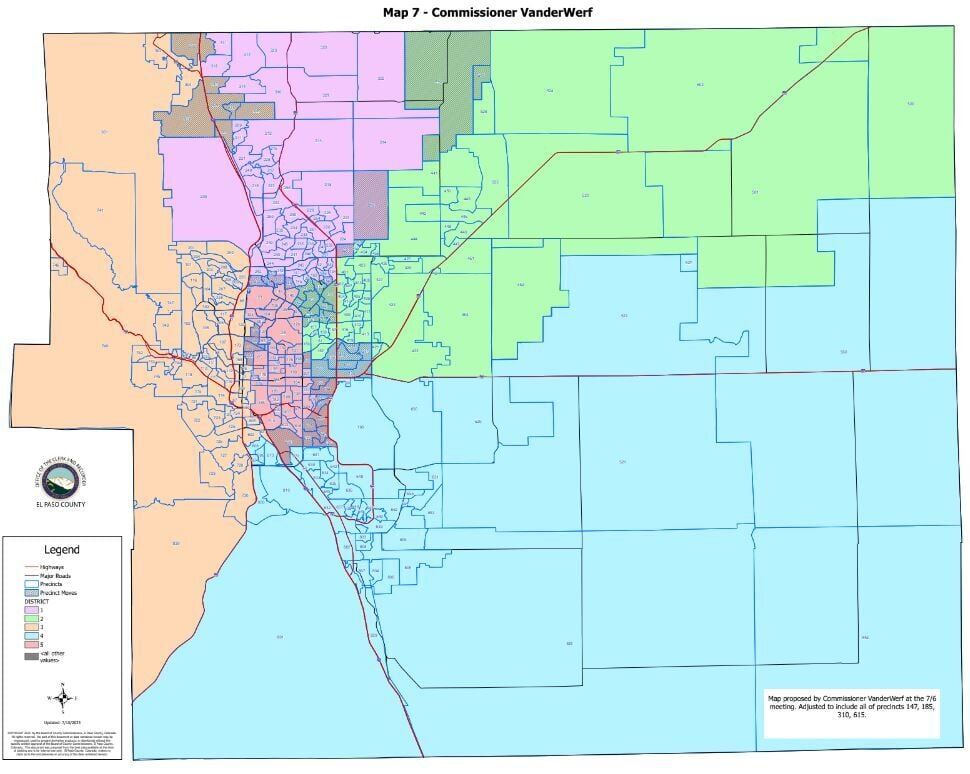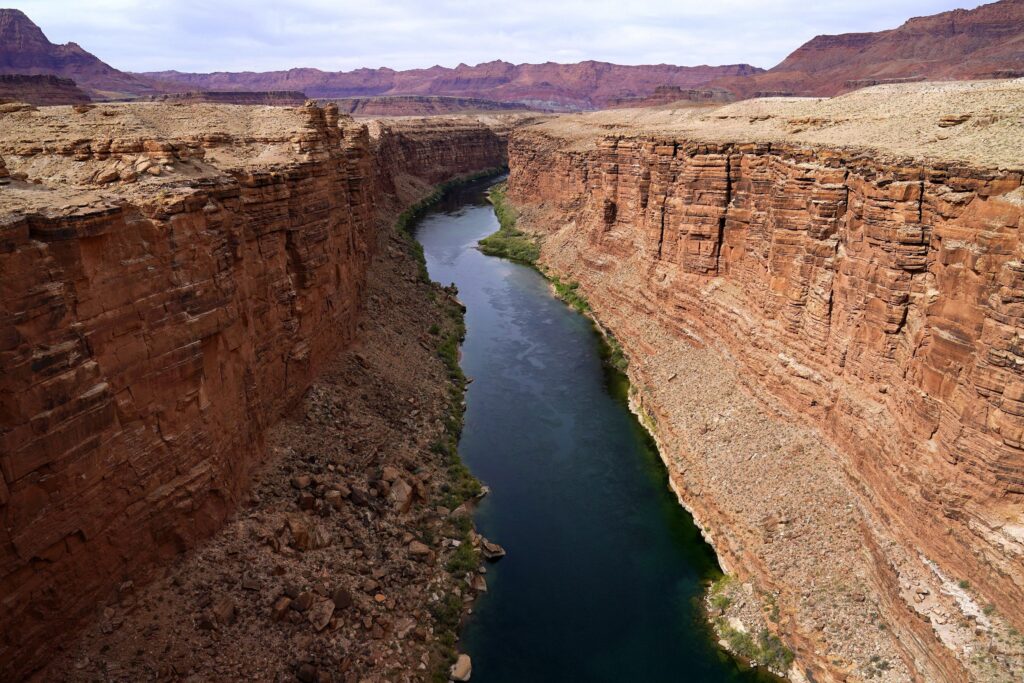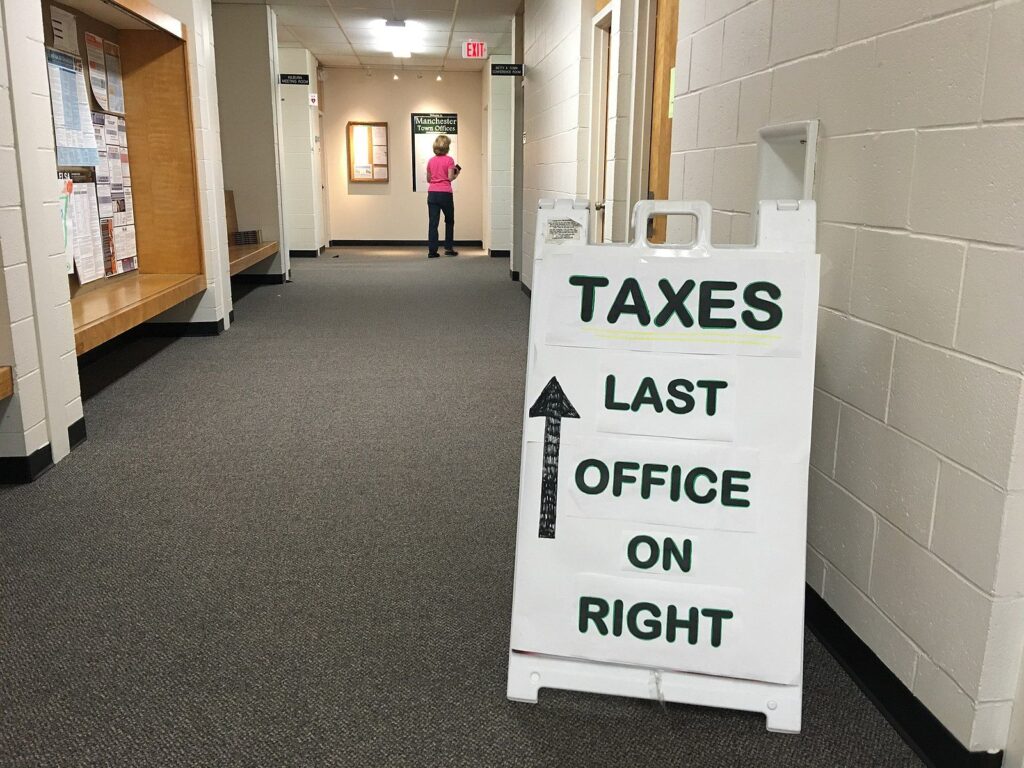Redistricting dilemma: County commission explores ways to consolidate ‘communities of interest’, including southeast Colorado Springs (copy)

In response to heavy public support for racial and ethnic minority-populated areas holding greater weight when redrawing commissioner district boundaries, the El Paso County Redistricting Commission has presented new maps as it nears the end of its public input process.
Over the course of their last two meetings, held in Districts 4 and 3 on July 6 and on Monday, respectively, commissioners also addressed public challenges to the wildland-urban interface, where wildfire-prone areas meet residential development, as a prioritized community of interest.
The redistricting commission, consisting of the current five members of the El Paso County Board of Commissioners, is tasked with redrawing their constituent districts for the first time since 2017 and has until the end of September to do so.
Under House Bill 21-1047, passed in 2021, counties cannot see more than 5% in population deviation between their most and least populous districts. The bill also encourages, as much as possible, preserving “communities of interest – such as urban, rural or trade areas, or other factors like education, environment or water needs – to ensure “fair and effective representation.”
At each of the four public redistricting meetings held so far, residents from every district have advocated repeatedly for southeast Colorado Springs to be consolidated into one district so as to not dilute voting power.
“This (region has) a cohesive cultural and political identity, and also is the part of the county with the highest density of people from historically underrepresented groups, like Black, Latino and Hispanic residents,” state Rep. Tony Exum Sr., who represents House District 17 and much of southeast Colorado Springs, said on July 6.
Residents have defined that region as a group of just under 30 voter precincts west and northwest of the Colorado Springs Airport that each have a minority population of 45% or greater.
This week, commissioners reviewed a map proposed by District 5 Commissioner Cami Bremer that moved District 5’s boundaries north to consolidate its southeast precincts into District 4 as a cohesive community. They also reviewed a map proposed by District 3 Commissioner Stan VanderWerf that kept the Air Force Academy in District 1 and moved some of the Patty Jewett neighborhood into District 3 to consolidate southeast precincts into District 5.
But because populations grow more compact closer to Colorado Springs, the move to consolidate the southeast in Bremer’s map would require the entire part of the Eastern Plains, from near Black Forest to Pueblo County, to have just one commissioner.
Moving even a few precincts in central Colorado Springs could affect close to 35,000 residents, El Paso County Clerk and Recorder Steve Schleiker said, a significant effect when each new district should have a population of roughly 146,550, based on 2020 U.S. Census data.
That kind of give-and-take is difficult to navigate, commissioners have argued, and the task of keeping all of the vast number of possible communities of interest in the county together is “impossible.”
Residents on Monday argued against consolidating Monument and southwest Colorado Springs into one district, questioning whether wildfire-fighting needs and efforts west of Interstate 25 are truly affected by sharing a single commissioner.
Previously, District 1 Commissioner Holly Williams has questioned prioritizing the wildland-urban interface when HB 21-1047 emphasizes political competitiveness and compliance with the Voting Rights Act of 1965, or protecting ethnic minority communities.
“I was the one who initially brought up the WUI (as) a good dividing line,” Williams said at the July 6 meeting. “I just wonder if we should be placing so much emphasis on … because we have a very specific list of communities of interest listed in this House bill.”
District 3 residents argued that the small business- and tourism industry-saturated westside, heavy with historic districts, should be kept separate from Monument, and argued against any map that decreases competitiveness in District 3 – which VanderWerf narrowly won after a late push by his Democrat opponent in 2016.
“We’re not asking to hand a district to the Democratic Party … what we’re asking is that you do not continue to pull away the chance that Democrats have of winning, that’s it,” resident John Jarrell said. “Then, they’ll have to do the hard work of actually winning the elections.”
The next redistricting meeting will be held Monday at 9 a.m. at the county Regional Development Center.
County staff did not eliminate any new maps, but will present a total of 16 proposed maps available for public viewing at the next redistricting meeting, including two maps created by residents Katherine Czukas and Lois Landgraf.
Commissioners are expected to adopt a final map on Aug. 15.
Click or tap here for political competitiveness and racial population analysis of the proposed maps from the July 6 meeting.
Click or tap here for political competitiveness and racial population analysis of the proposed maps from Monday’s meeting.
More information on the county Redistricting Commission, how to create and submit redistricting map proposals and further resources can be found here.
City Council to hear plans for 400-unit apartment project near South Nevada in Colorado Springs













